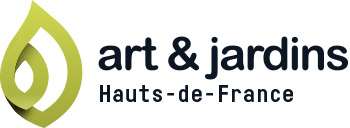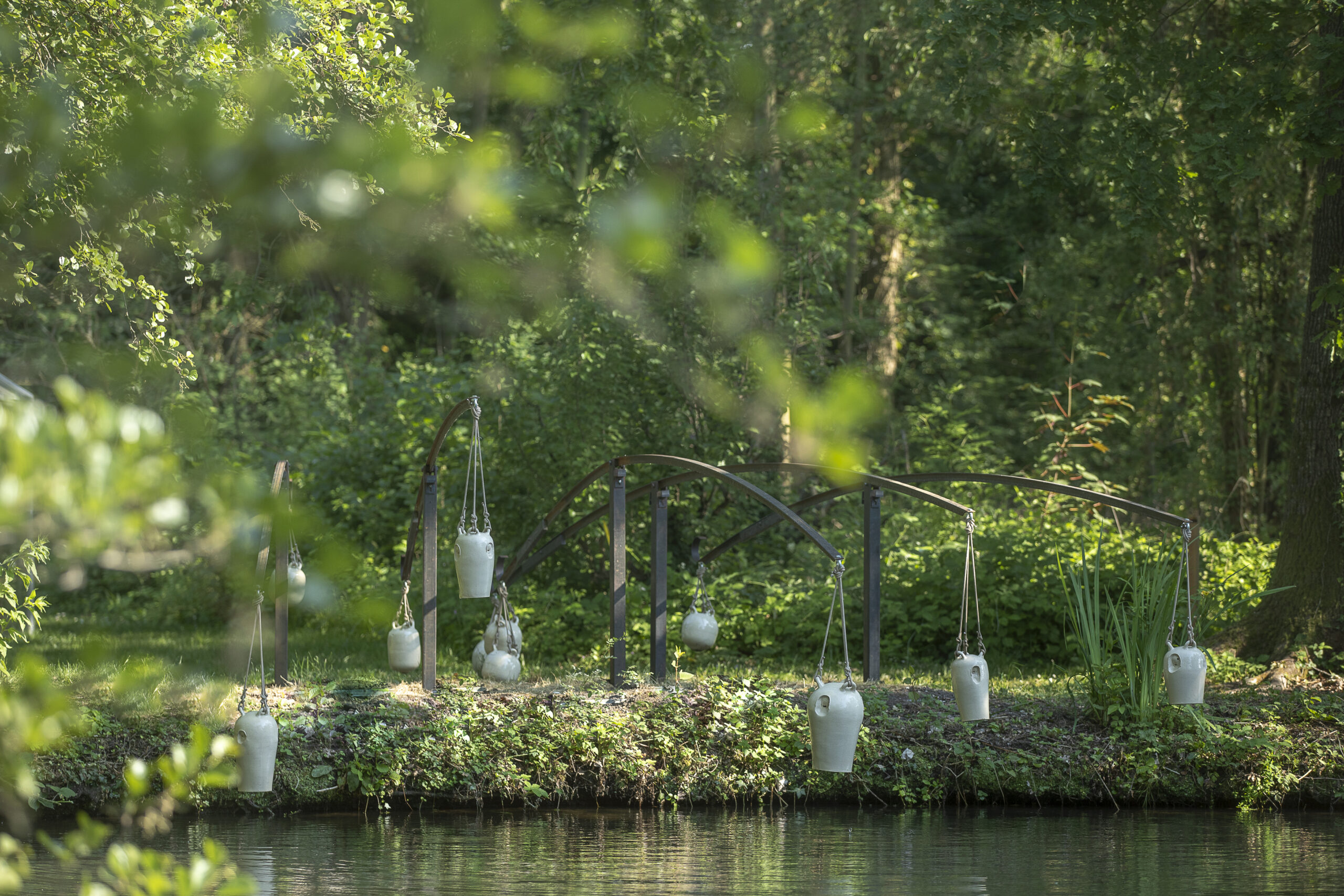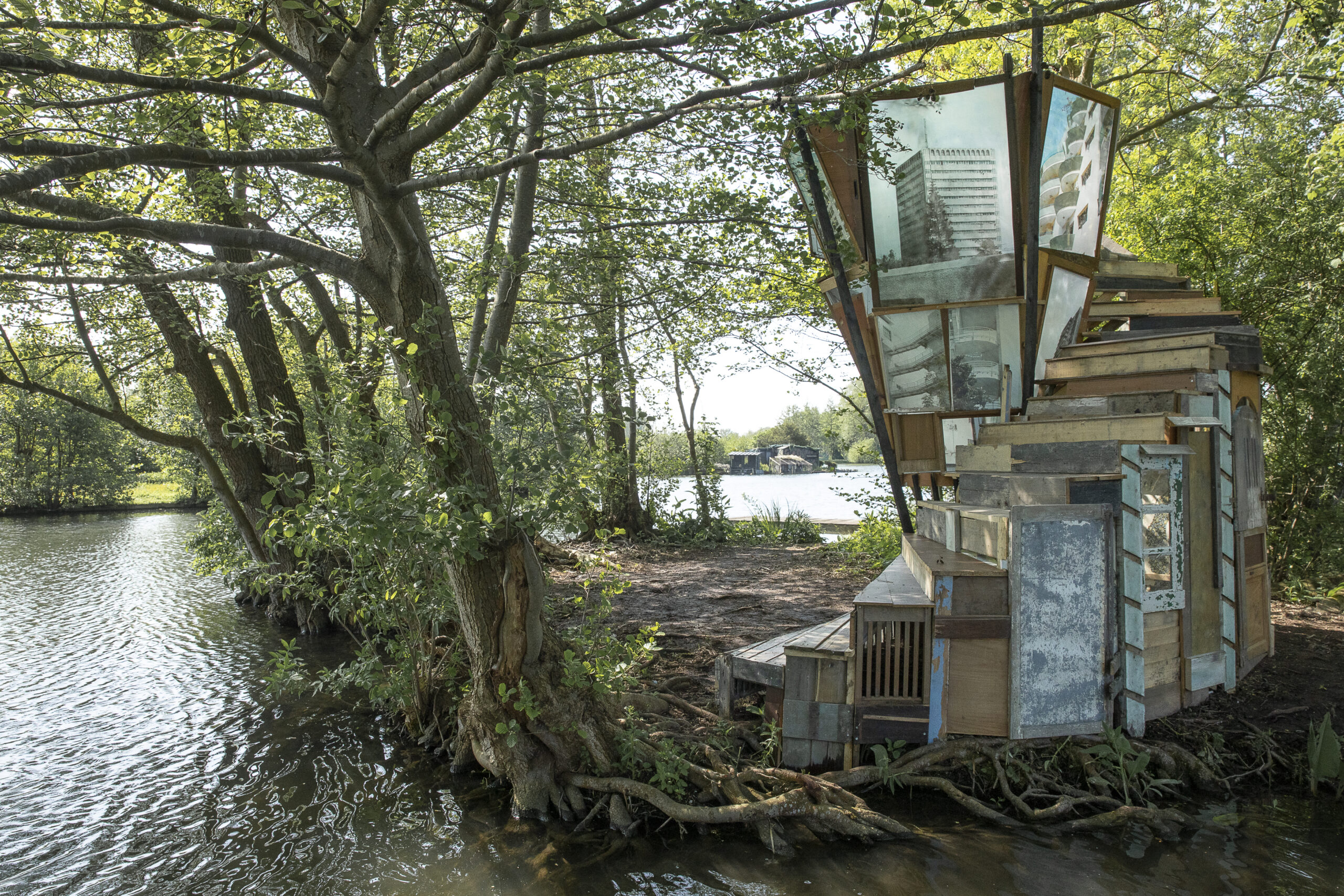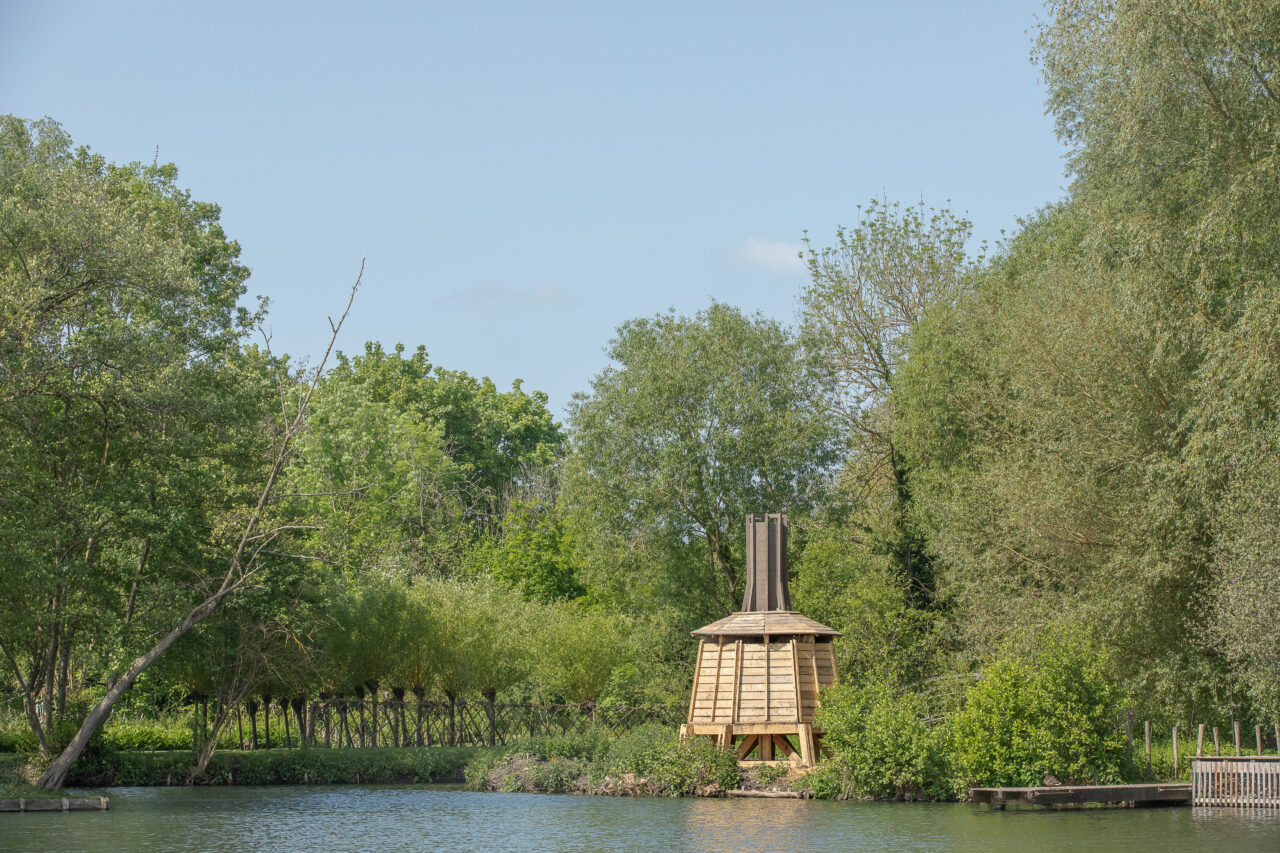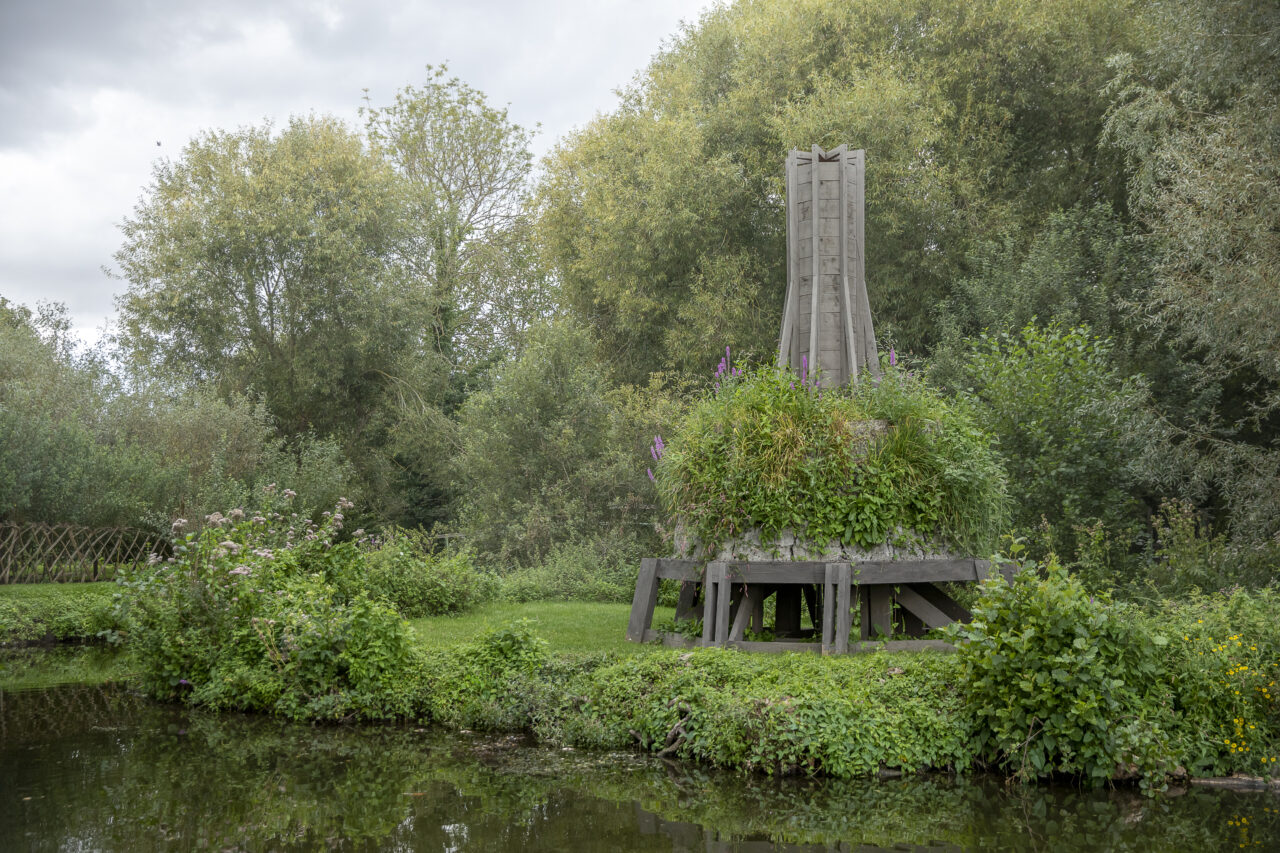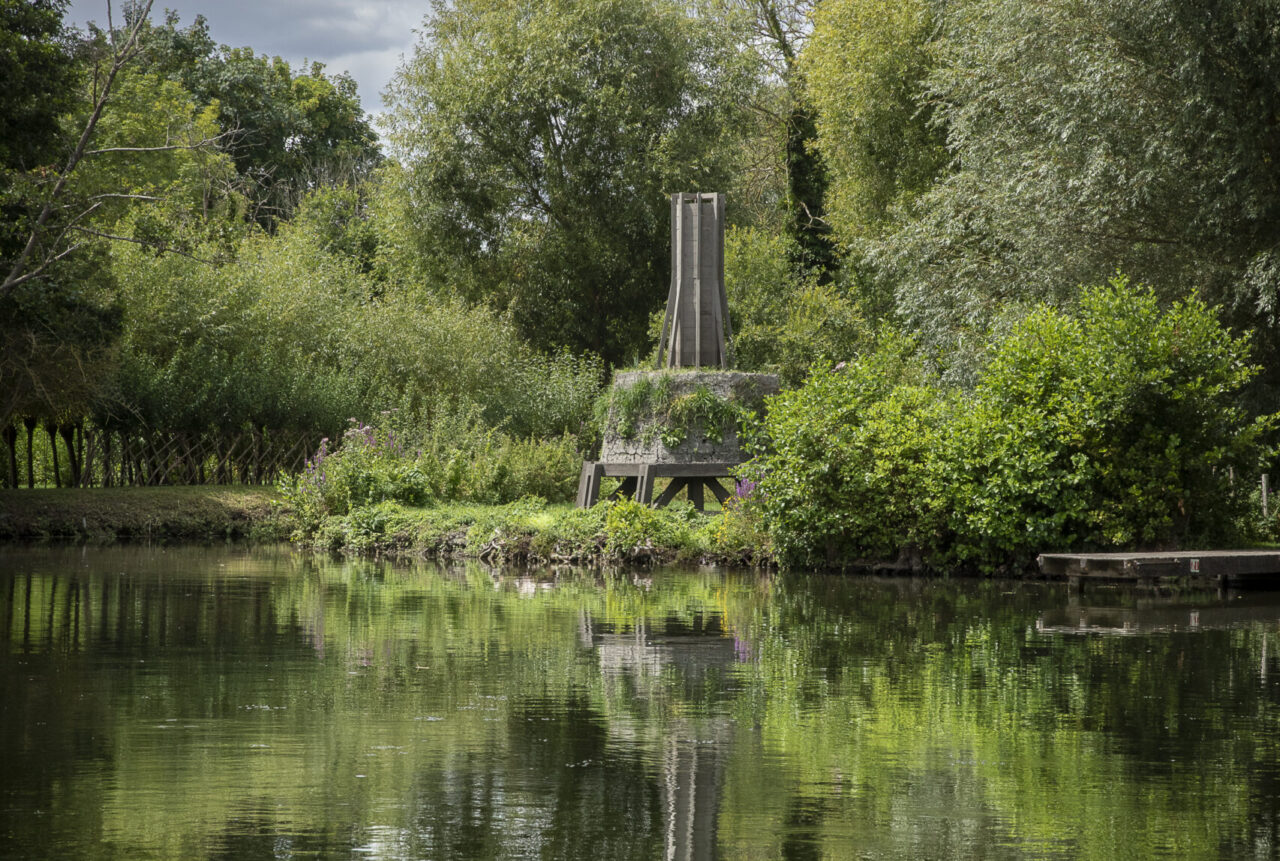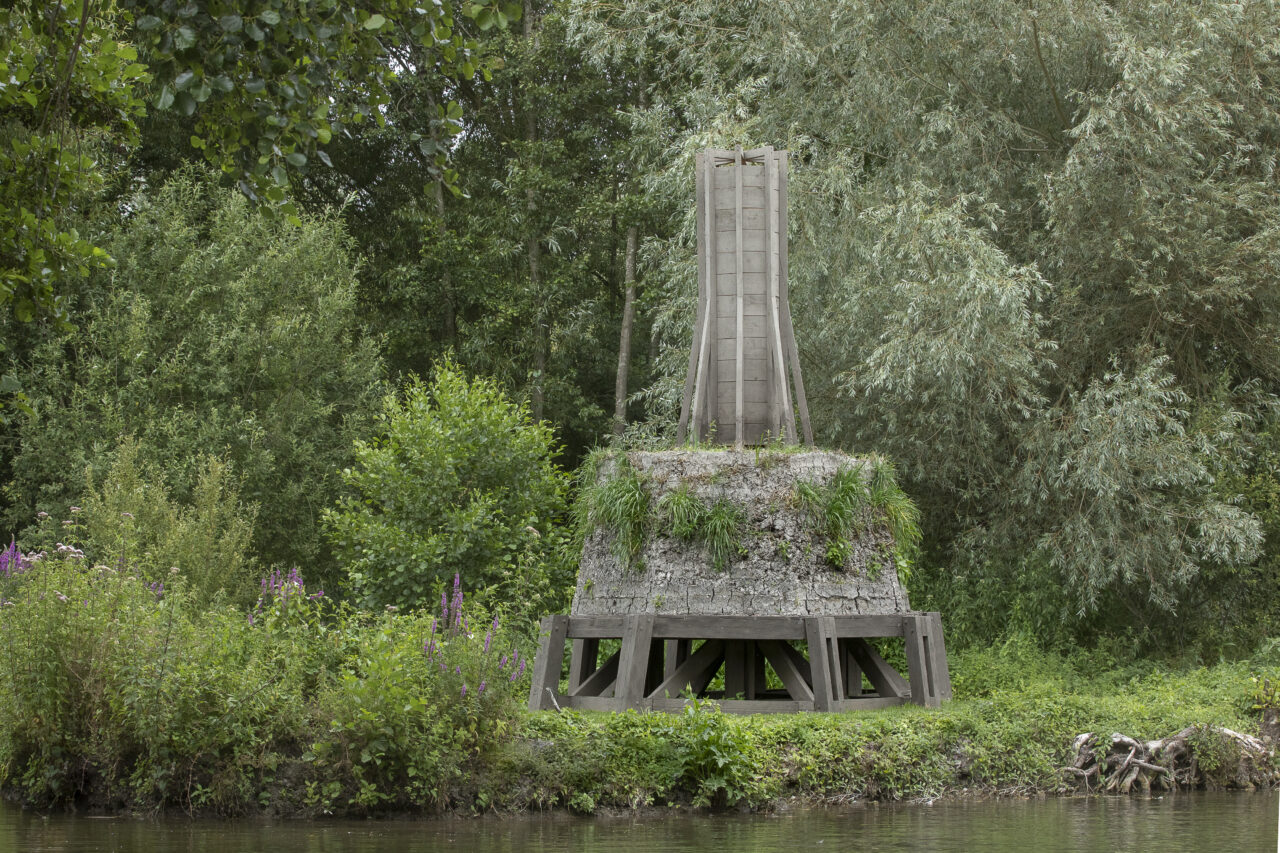Carved and fragmented by canals, the Hortillonnages of Amiens are extraordinary. The flat terrain of the site, along with the low agitation of the water, favors the deposition of fine particles suspended in the water, which accumulate and form a well-known material in the depths of the streams: mud. The result of centuries of accumulation and sedimentation of micro-organisms of plant and animal origin, this mud fascinates us! The product of erosion, it is inexhaustible, to the point that it poses a danger to the Hortillonnages, as it reduces the water level, alters its flow, and jeopardizes the existence of the site. Our project is very simple: to build with it! Panta Rhei is a monumental sculpture made of mud. Erected on a wooden platform, no less than 30m3 of extracted sludge is hand-molded. From this elusive, sticky, and malleable material, the Barreau Charbonnet duo signs a basic geometric shape: a truncated cone. Through an empirical protocol, the mud is loaded, hoisted, and compacted. The whole constitutes a break between the aesthetics of the raw wooden retaining structure and the sophistication of the clay cone’s smoothing. A recurring figure in architecture, this shape evokes both that of foundations, pillars or other buttresses, which widen at the base, support and stabilize structures, but also refers to a well-known experience in the construction of concrete structures: the Abrams cone slump test. Here, building with sediment invokes the idea of a new beginning, that everything and every material erodes over time, degrades, collapses, and eventually transforms into sedimented particles. “Everything flows and nothing remains” * (* in Panta Rhei – Heraclitus). Made in situ with what is under our feet and at hand, the work creates an architectural utopia, that of a primitive precarious construction, a fragile refuge, which bears witness to the challenges of construction in light of the uncontrolled exploitation of the Earth’s resources. Nestled in the landscape of the Hortillonnages, the installation blurs the lines. A vestige of the architecture of an unfinished Tower of Babel, a vernacular refuge, and a bitter maritime navigation: Panta Rhei is all of these at once.
The artist
(Français) Barreau Charbonnet

